Exploring Mission Santa Barbara, California
I may be back home in the Yukon now, but my head is still in California 🙂 We spent Friday seeing more of Santa Barbara, with the main destination for the day being the historic Mission.
Mission Santa Barbara was founded by Franciscan Padre Fermín Lasuén on December 4, 1786, and has looked much as it does today since 1831 when the second tower was added. The Santa Barbara Earthquake of December 21, 1812, destroyed the buildings which existed at that time, and it took 8 years to rebuild the mission in its current form except with a single tower.

At the entrance is a life-sized statue of Junípero Serra (1713-1784), who founded the first 9 of the 21 Spanish missions that would be built in Alta California (the area from from San Diego to San Francisco today).

Dad and I at the entrance.
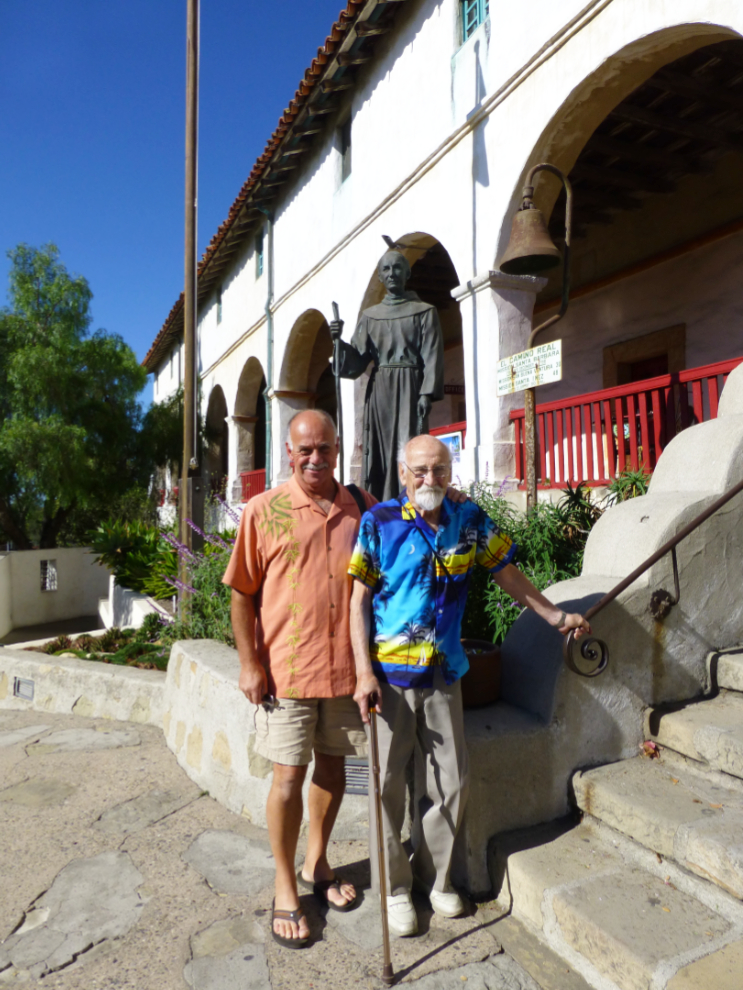
My research for this post has been quite frustrating – I thought that there would be lots of quality information about the mission online, but there’s not only very little online, I can’t even find a book that looks like it’s aimed at people with a serious interest. This impressive painting just inside the tour entrance appears to be by an known artist.

Self-guided tour admission prices are very reasonable – $5 for seniors, $6 for adults and $1 for youth. This photo shows some details of the gallery that is the route along 2 sides of a large courtyard.
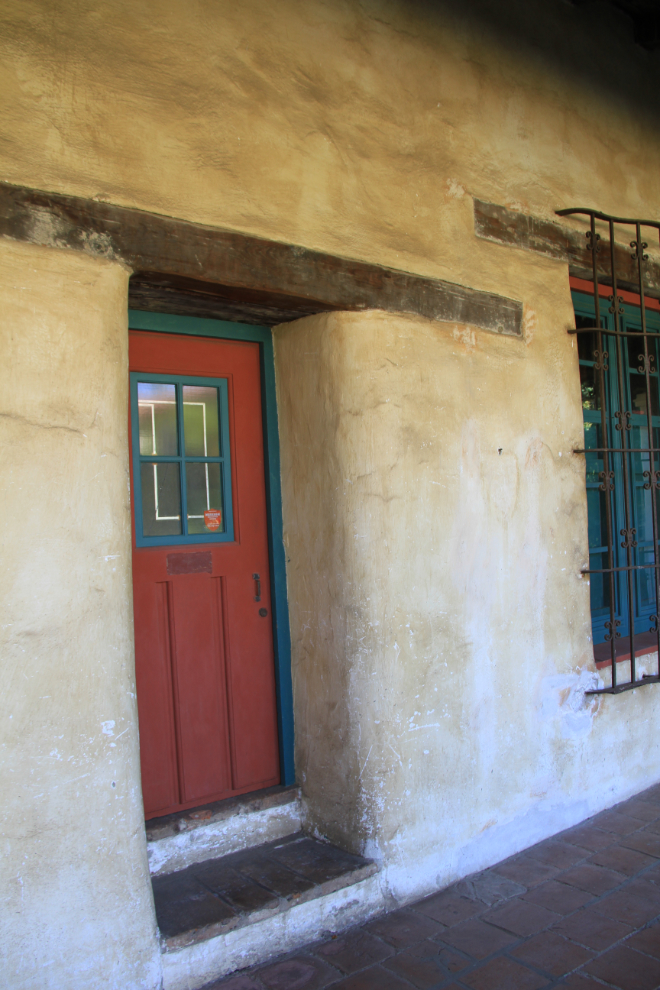
We began our tour by watching a film that my sister says is very different than the one she saw during her last visit. This new one has no references to the way the Chumash Indians were really treated – they were virtual slaves and were beaten for any transgressions.
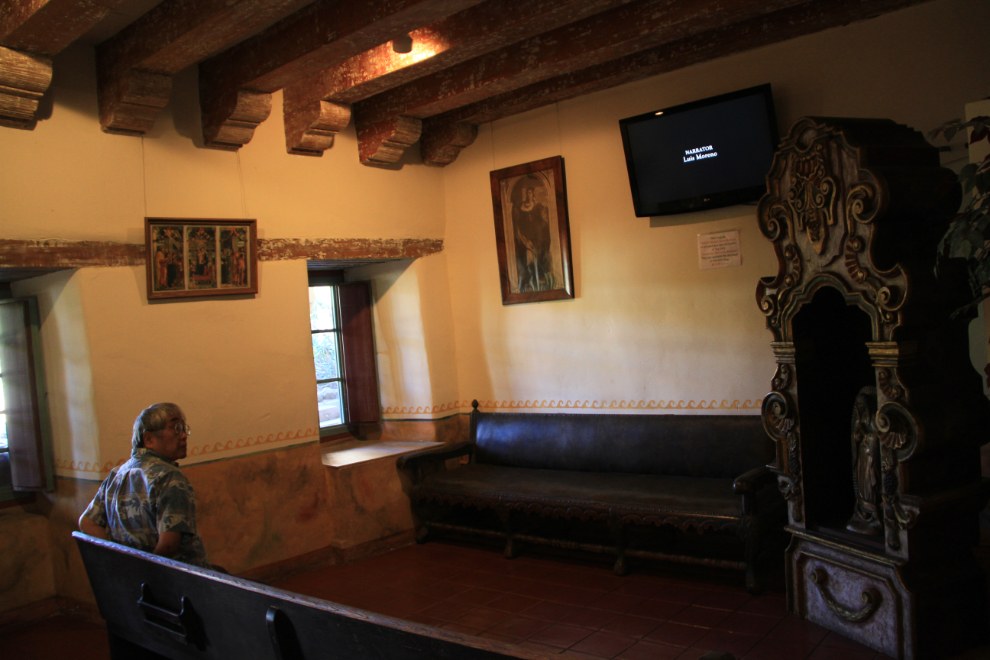
The courtyard.
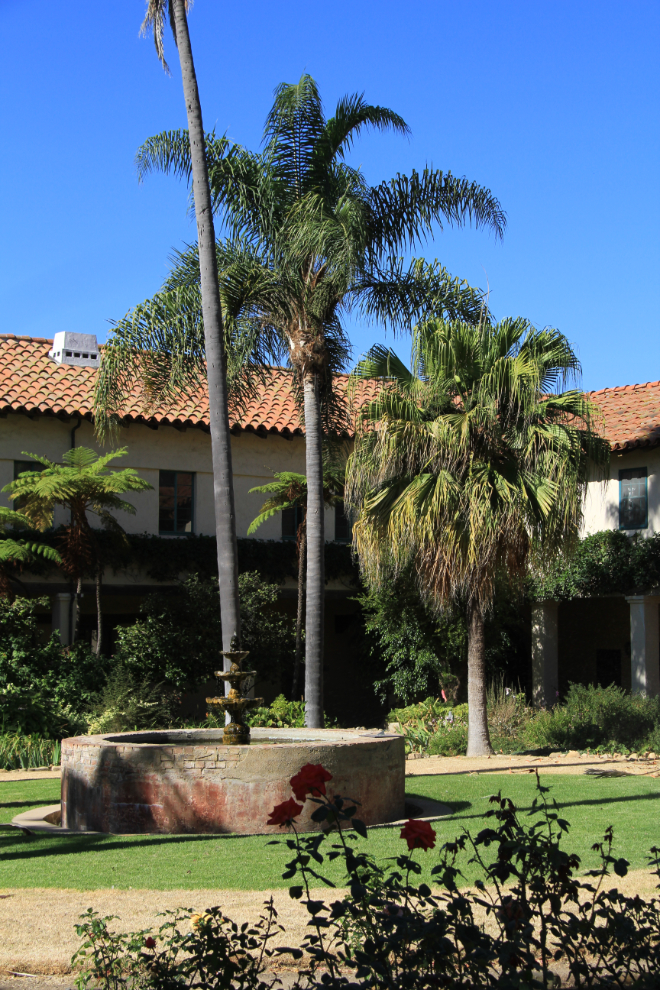
Signs like this guide visitors around the property.
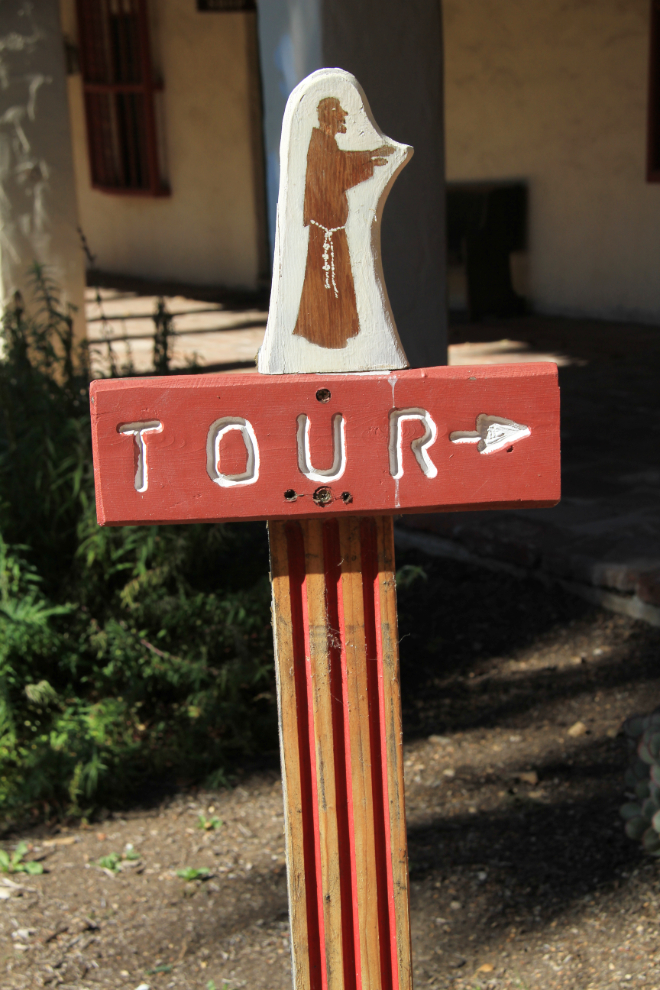
Some early tools and millstones. Agricultural production was considerable – between 1787 and 1834, the mission harvested 223,285 bushels of wheat, barley, corn, beans, peas, lentils, garbanzos (chickpeas) and habas (broad beans).
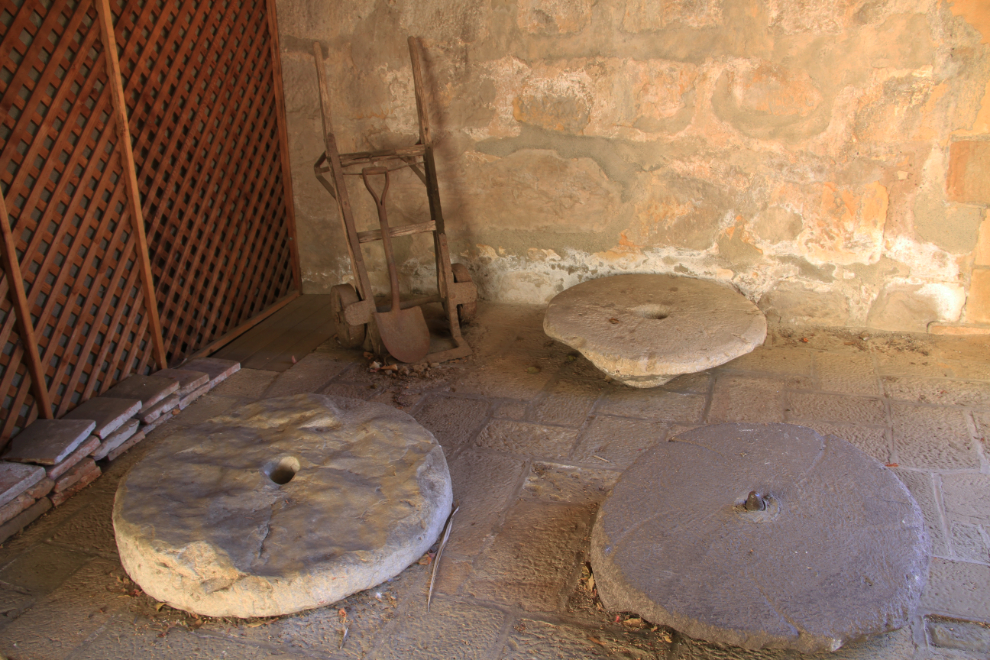
I wonder how many hours it would take a craftsman to build a wheel/axle assembly like this 200 years ago. Carretas were pulled by two oxen – this particular one dates to the late 1800s.
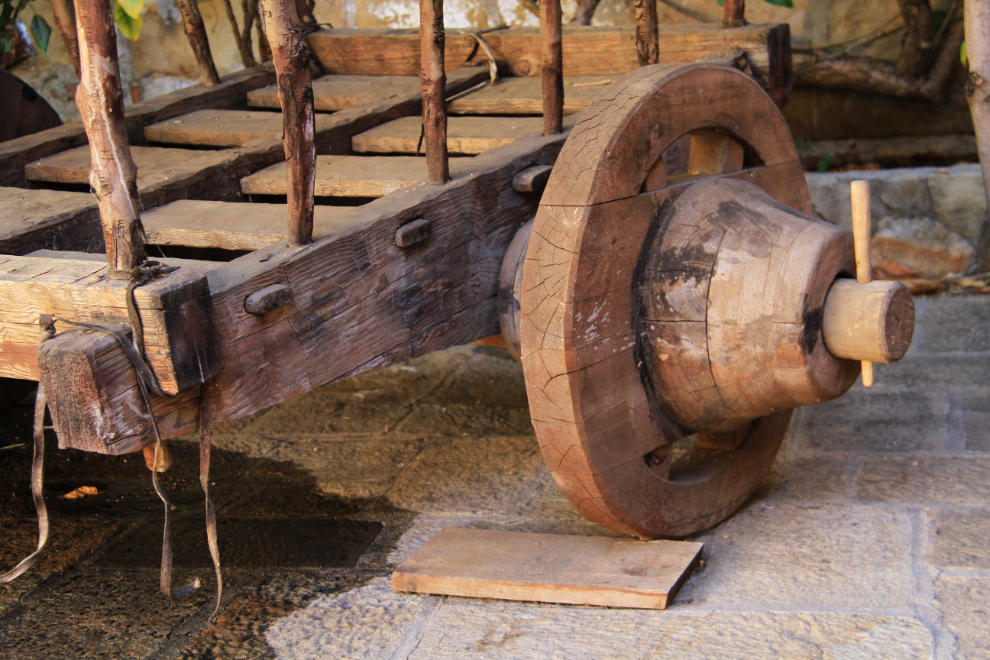
Since 1893, the mausoleum has served as the final resting place for Franciscan friars and a number of prominent citizens from Santa Barbara’s early days. In 2011, a columbarium was added, with niche spaces for inurnments of cremated remains, available to the general public at prices starting at $8,800.
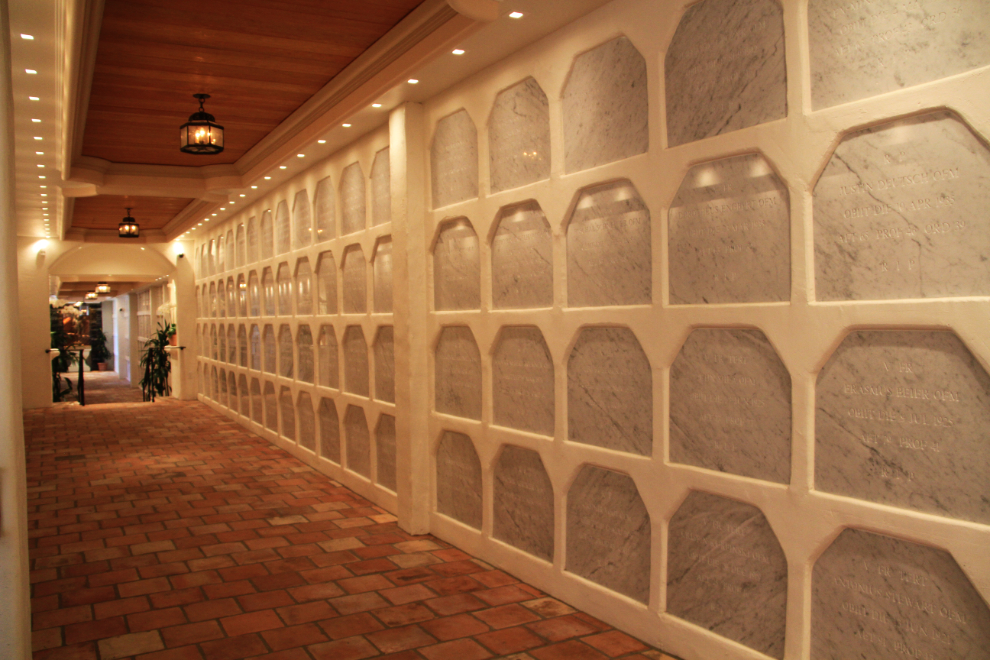
The cemetery contains the graves of many people whose family names are still well known in the region.
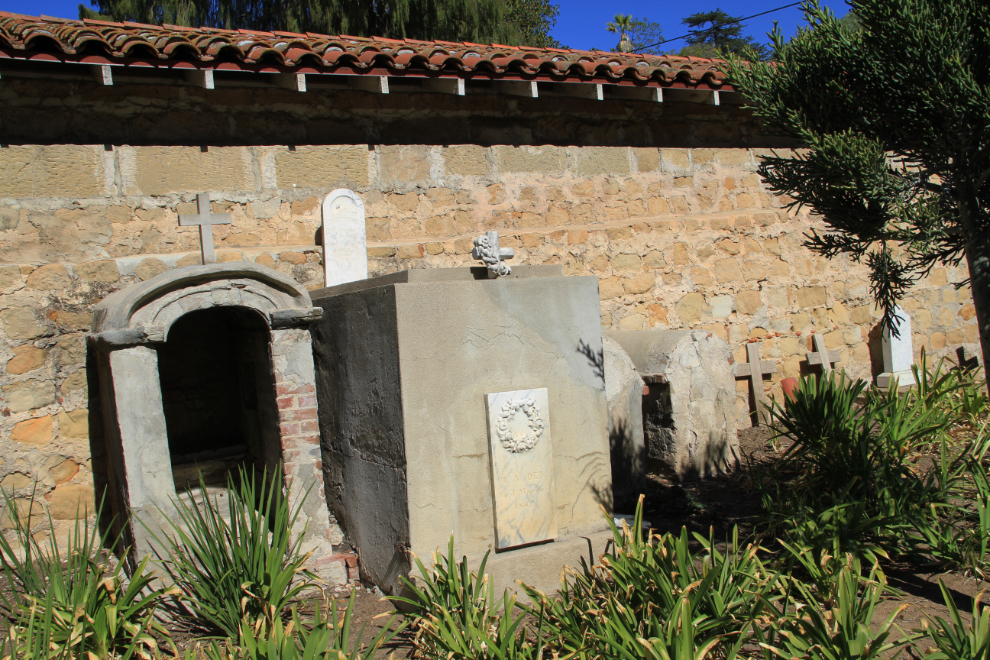
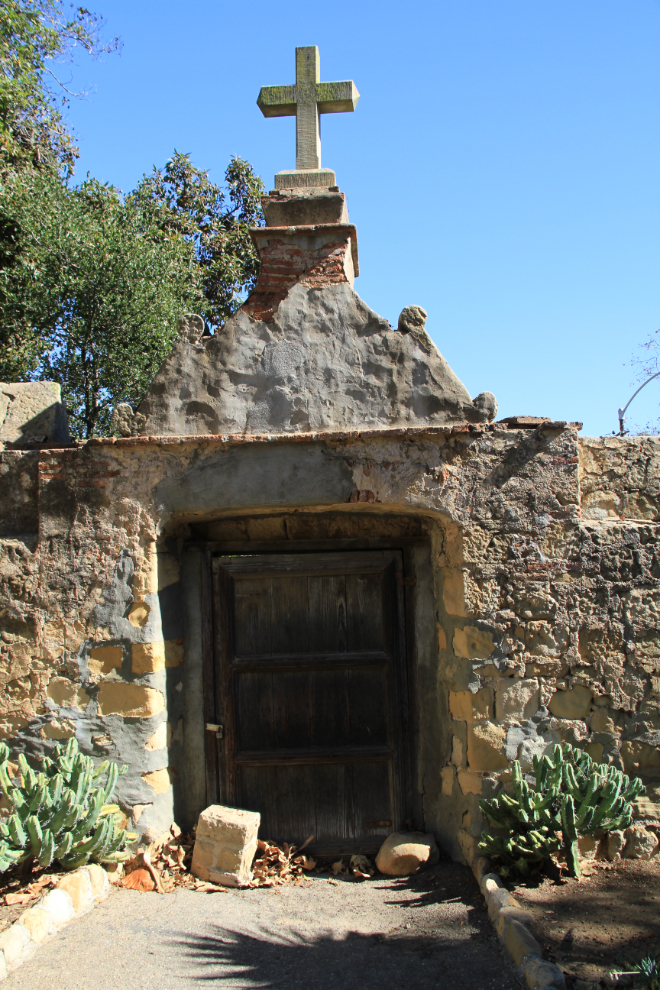
The carvings above the exit from the cemetery caught my attention.

Saint Barbara is in the centre of the altar. The mission was founded on the day of the feast of Saint Barbara, who is best known as the patron saint of artillerymen, military engineers, miners and others who work with explosives. This pertains to the legend that Barbara’s father was struck by lightning and consumed by fire after beheading her for refusing to turn away from Christianity.
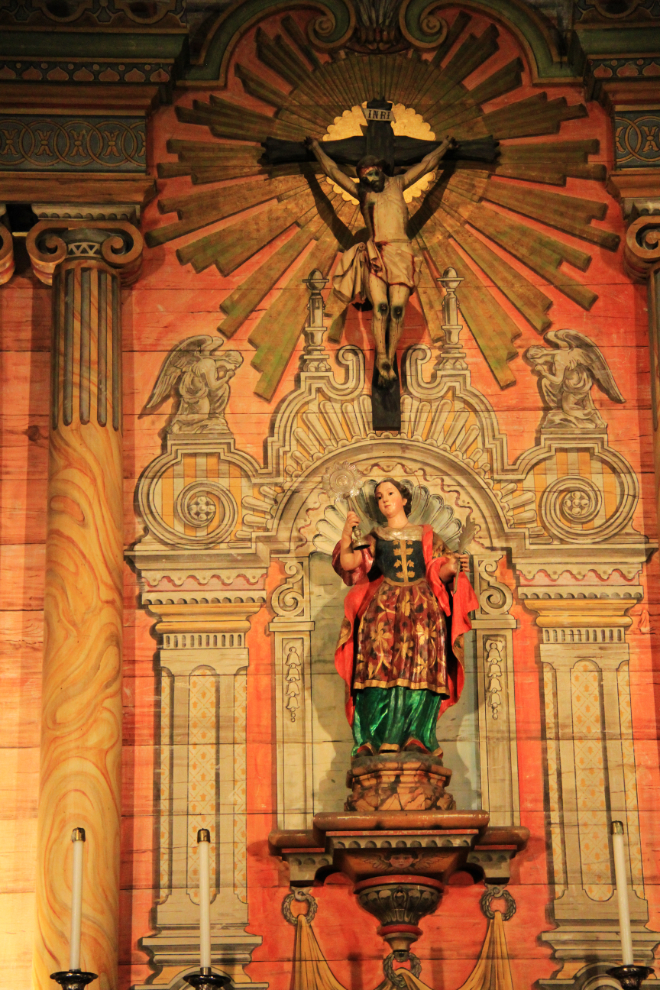
The abalone painted on this column in the church were important in both the diet and the art of the Chumash Indians that the mission depended on.
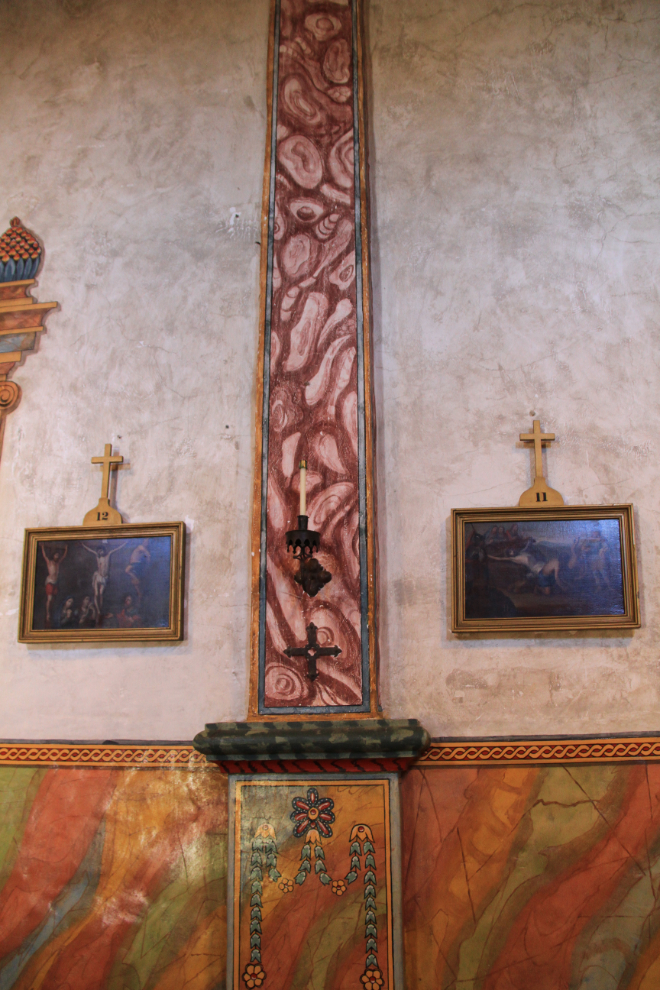
Seen on the ceiling – a reference to the lightning that killed Saint Barbara’s father?
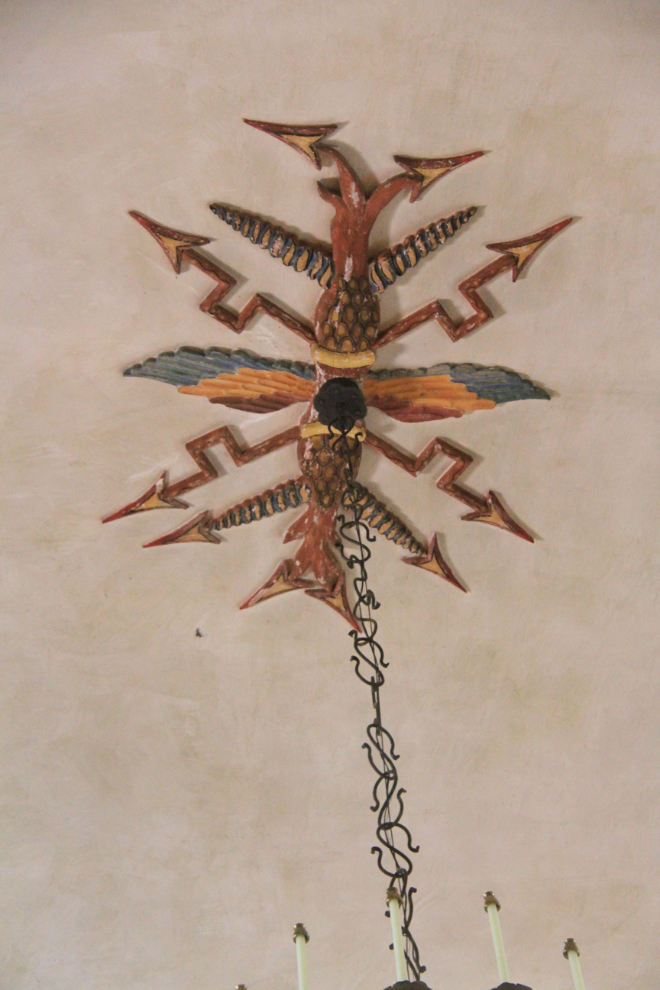
An example of the elaborate paintwork in some rooms.
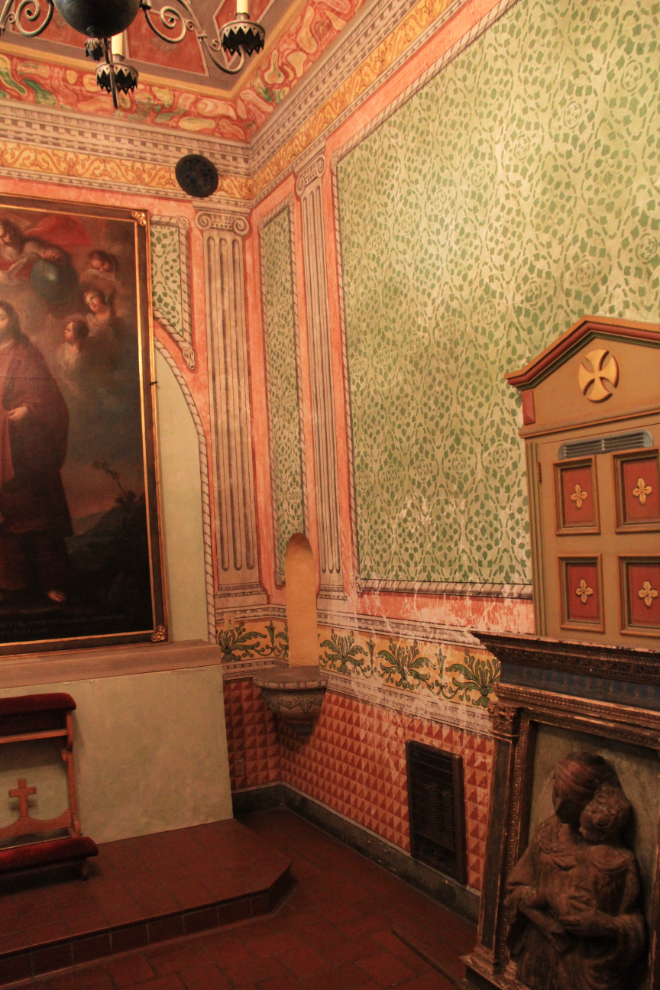
This map shows the location of the 21 Spanish missions.
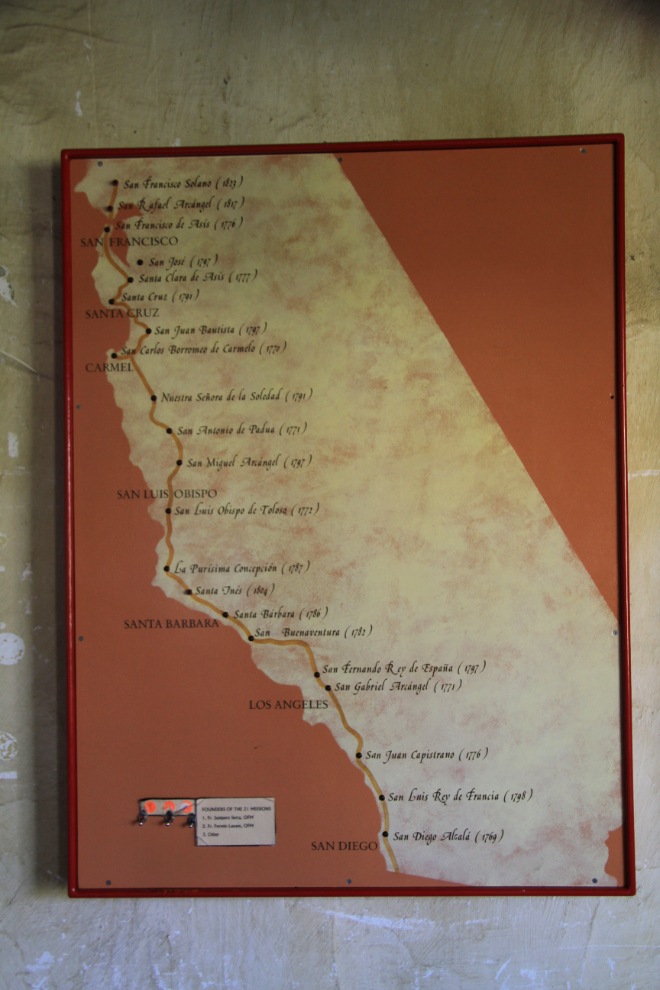
In the museum, drawings of the mission as it was in 1787 and 1794, and a surveyor’s chain.
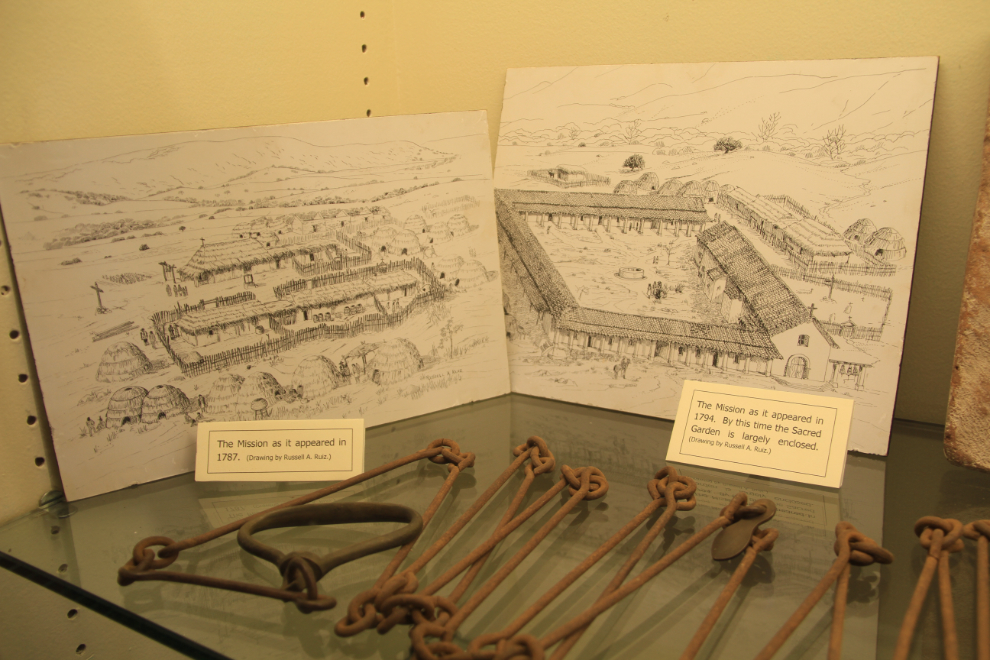
This is the way a kitchen would have looked in the early days, with an original adobe wall on the left.
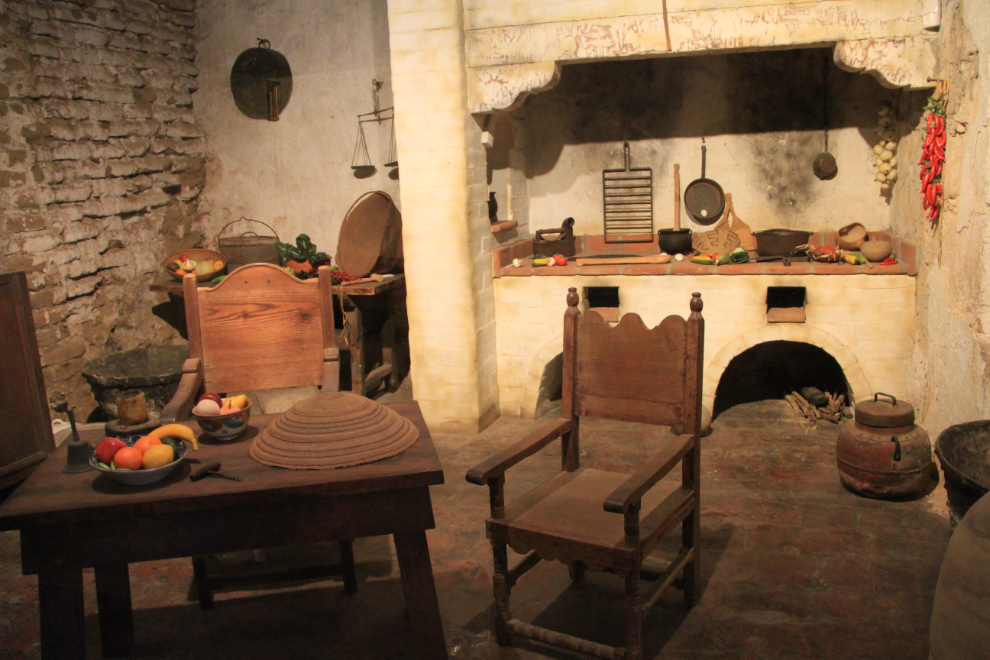
This sandal was worn by an early Franciscan missionary. The 5 centimeter platforms of carved wood have leather uppers – the heel and toe are separate to allow for easy walking on uneven ground.
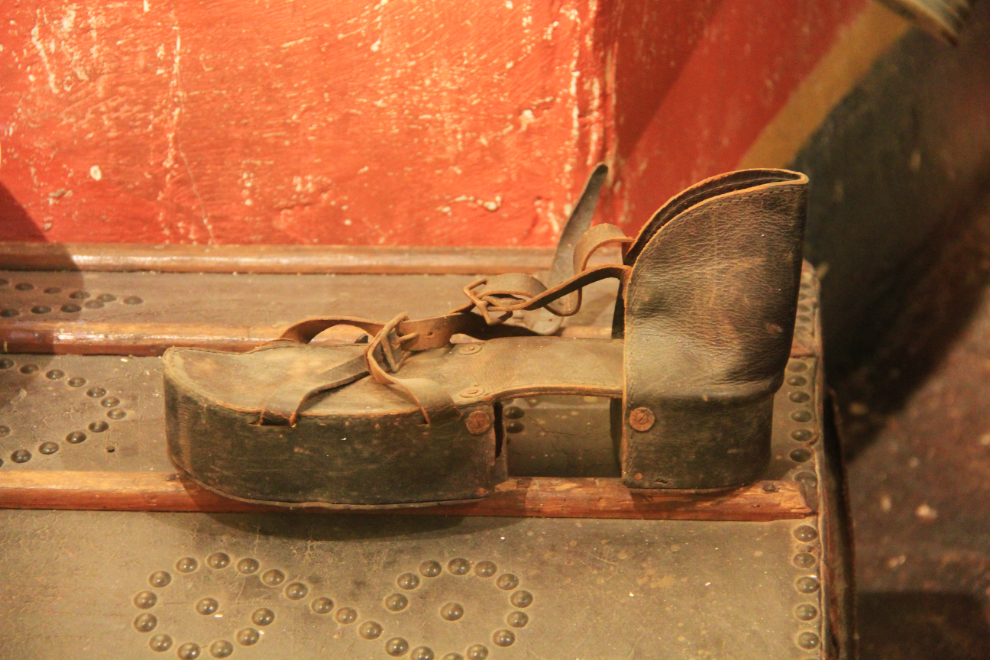
The photograph at the upper right shows what the candle and reflector look like when lit – quite dramatic!
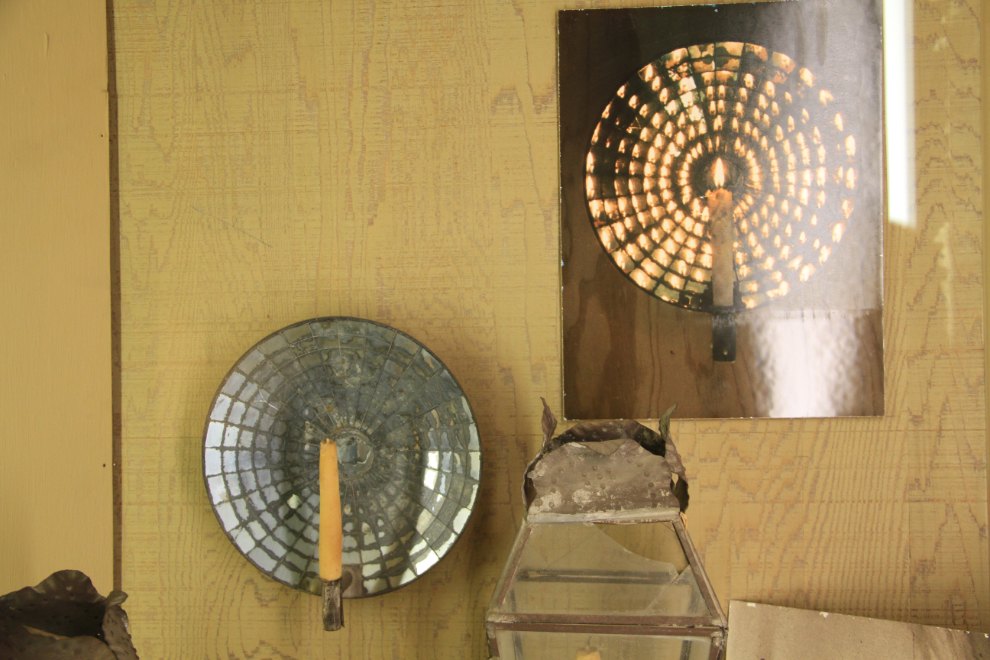
The mission as it looked just a few hours after the June 29, 1925, earthquake. The towers and some parts of the interior were heavily damaged.
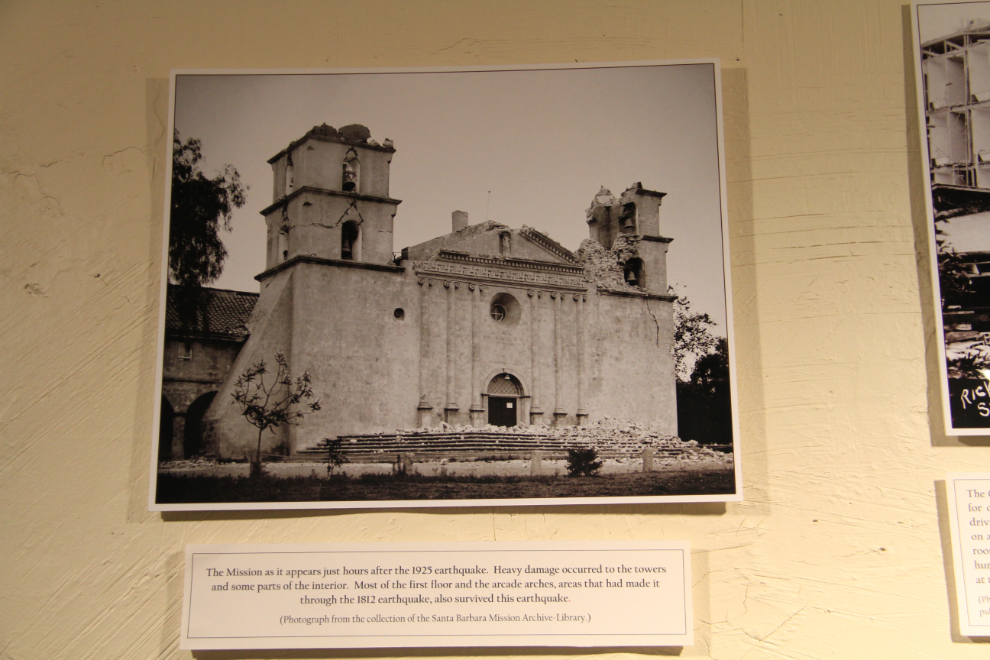
A case in the last museum room before entering the gift shop was full of clothing, posters and other items from various celebrations throughout the mission’s history.
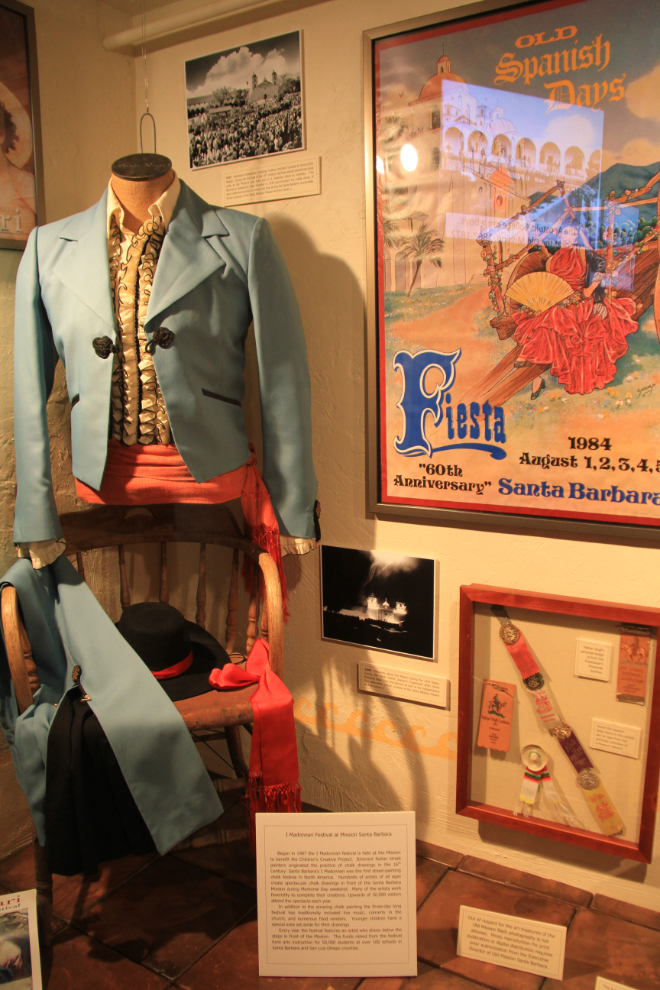
Before we left the building, I couldn’t pass up this photo op. What do you think, would I fit in? 🙂
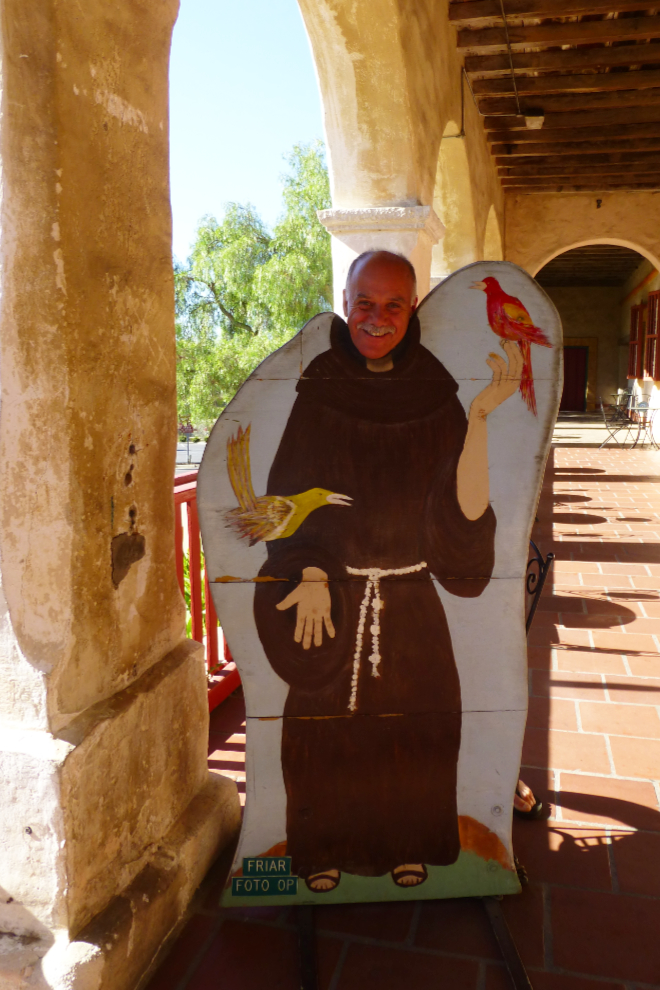
Back at the fountain out front, which was built in 1808.

This large lavanderia was the community washing facility.
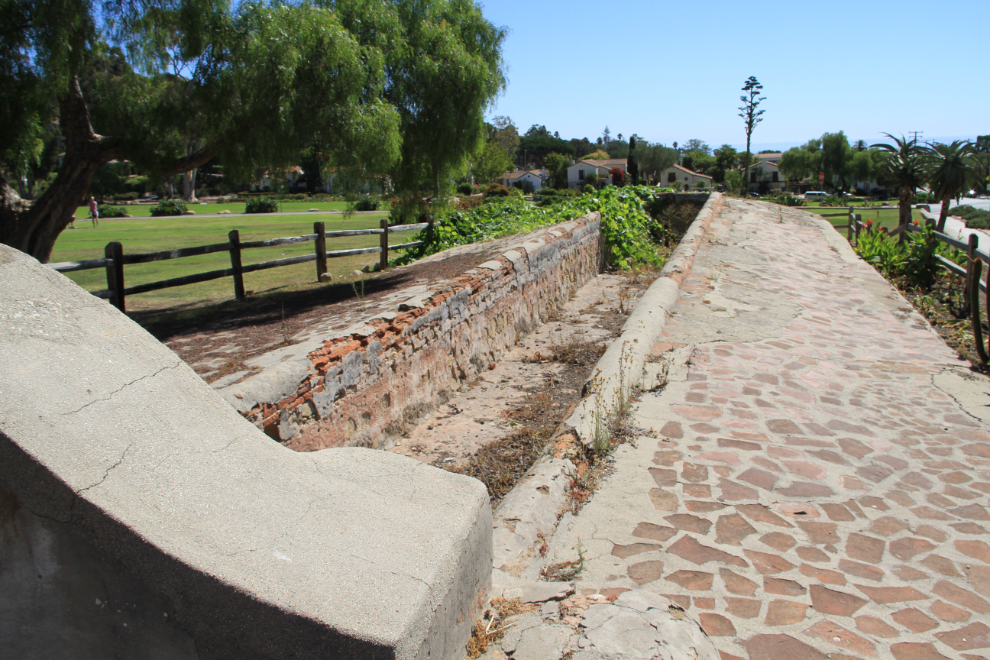
This water spout in the form of a cougar’s head is the oldest piece of public art in California.

A final look back at the mission. We spent about 90 minutes at the mission, and at least one of us ( 🙂 ) thought that he’d just scratched the surface of what there is to see. Although Mission Santa Barbara is the most impressive, I can see myself doing a tour of all 21 sites.

From there, we headed downtown – the next post will be much shorter.